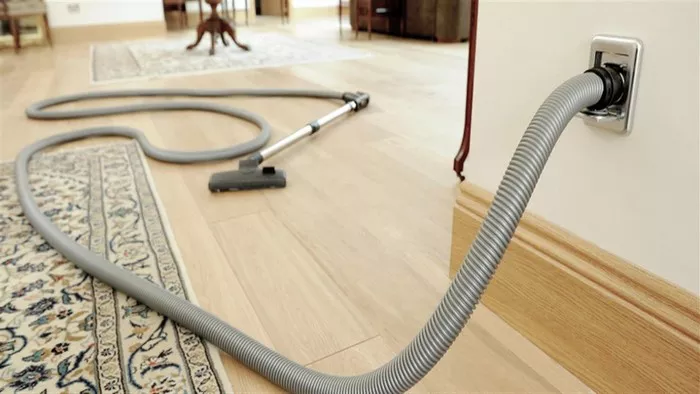Central vacuum systems offer a convenient and effective solution for maintaining cleanliness in homes and commercial spaces. Unlike traditional vacuum cleaners, which require users to lug around heavy units, central vacuum systems feature a powerful motor located in a centralized location, typically in a basement or garage. This setup allows for quieter operation and eliminates the need to empty a dustbin after each use.
The benefits of central vacuum systems extend beyond convenience. They contribute to improved indoor air quality by effectively removing dust, allergens, and other airborne particles from living spaces. Additionally, central vacuum systems can enhance the longevity of carpets and flooring by reducing the abrasive effects of dirt and debris.
However, to enjoy these benefits to the fullest, regular cleaning and maintenance of the central vacuum system are essential. Neglecting proper care can lead to diminished performance, increased energy consumption, and even system failures. In this comprehensive guide, we will outline step-by-step instructions for cleaning and maintaining your central vacuum system to ensure optimal performance and longevity.
Manufacturer’s Manual and Specific Brand Information
Before embarking on any cleaning or maintenance tasks, it is crucial to consult the manufacturer’s manual for your specific central vacuum system. While the basic principles of maintenance apply across different brands, each system may have unique features and requirements that necessitate specialized care.
Relying solely on generic advice or assuming that all central vacuum systems are alike can lead to costly mistakes and potential damage to your system. By referring to the manufacturer’s manual, you can access valuable information regarding recommended cleaning intervals, compatible accessories, and troubleshooting tips tailored to your system.
Basic Cleaning and Maintenance Tips
Avoid Abuse
One of the most common mistakes users make is using the central vacuum system to pick up large debris, sharp objects, or liquid spills. While central vacuum systems are designed to handle a wide range of cleaning tasks, they are not suited for these types of messes.
To avoid damaging your central vacuum system, refrain from using it to clean up spills or large debris. Instead, manually clean up such messes using a broom, mop, or dustpan.
Regular Schedule
Establishing a regular cleaning and maintenance schedule is key to keeping your central vacuum system in top condition. Set aside time on a weekly or monthly basis to perform routine checks and maintenance tasks.
Here are some essential tasks to include in your cleaning schedule:
1. Empty the dirt canister or replace the bag when it’s half full to prevent loss of suction power.
2. Check the hose, wand, and attachments for clogs regularly. A clogged hose can restrict airflow and reduce the efficiency of your central vacuum system.
3. Perform a visual inspection of the power unit monthly for superficial damage such as dents or cracks. Address any issues promptly to prevent further damage.
4. Inspect roller brushes for debris and ensure they spin freely. Clean or replace brushes as needed to maintain optimal performance.
5. Check bearings and bushings for wear and tear, and lubricate them as recommended by the manufacturer.
Protect Hoses
Central vacuum hoses are susceptible to wear and damage, especially if they are left lying on the floor or tangled during storage. To prolong the life of your hoses:
1. Cover vacuum hoses with a protective sleeve or sock to prevent wear and tear.
2. Store hoses off the floor to avoid accidental stepping or damage from heavy objects.
3. Avoid storing the hose attached to vacuum wands for extended periods to prevent stress fractures and kinks.
Accessories and Tools
Regularly inspect and clean all accessories and tools that accompany your central vacuum system. Over time, debris and hair can accumulate in attachments, leading to reduced suction power and performance.
Here’s how to keep your accessories and tools in optimal condition:
1. Remove any debris or hair from brush attachments using a comb or brush tool.
2. Clean crevice tools and upholstery brushes with a damp cloth to remove dirt and grime.
3. Check vacuum bags or canisters for obstructions and empty them before each cleaning session to maintain optimal airflow.
Additional Tips for Longevity
Soft Cleaning Cloths and Mild Solution
When cleaning the exterior of your central vacuum system, opt for soft cleaning cloths and a mild cleaning solution. Harsh chemicals or abrasive materials can damage the finish of your system, compromising its appearance and longevity.
Bag Replacement
If your central vacuum system uses disposable bags, make it a habit to replace the bag before each cleaning session. Overfilled bags can impede airflow and strain the motor, leading to reduced performance and premature wear.
Professional Repair
In the event of a malfunction or breakdown, it’s essential to seek professional repair services from a qualified technician. Attempting DIY repairs or troubleshooting without proper knowledge and expertise can exacerbate the problem and void your warranty.
Longevity of Central Vacuums
With proper care and maintenance, central vacuum systems can last up to 20 years or more. By following the guidelines outlined in this article and adhering to the manufacturer’s recommendations, you can maximize the lifespan of your central vacuum system and enjoy years of reliable performance.
Conclusion
A central vacuum system is a valuable investment that offers convenience, improved indoor air quality, and longevity benefits. However, to ensure optimal performance and longevity, regular cleaning and maintenance are essential. By following the steps outlined in this guide and consulting the manufacturer’s manual for specific instructions, you can keep your central vacuum system in top condition for years to come. Remember, a little maintenance goes a long way in preserving the efficiency and reliability of your central vacuum system.

